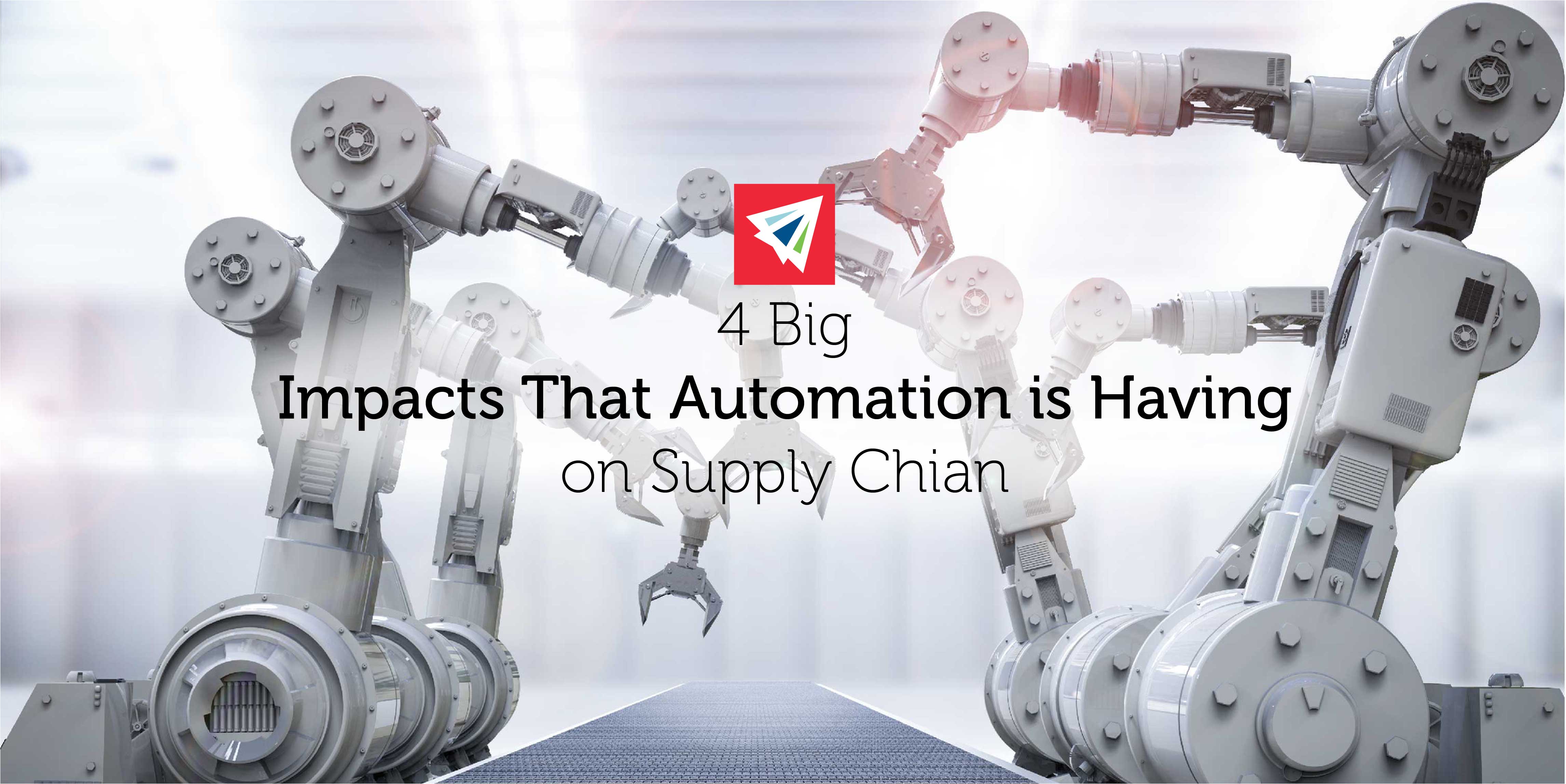Businesses have always searched for better ways to accomplish the same mundain tasks, and the natural progression of the business cycle continually pushes each industry towards a better version of its current state. Consider the age-old case of transporting materials. From bandwagons and buggies to steamships and modern-day transportation management systems, little to nothing in the industry has been left to its original archaic ways. Although continual improvement never stops, recent improvements are indicating that the logistics industry may be reaching its golden apex ages as automation in supply chain is on the rise.
Impacts of Automation in Supply Chain
What once were lofty discussion and dreams for automation in supply chain are now showing real progress and forecasted release dates. In the shipping industry, automation not only relates to vehicles, but warehousing, TMS software, and security as well. In addition, technology such as Artificial Intelligence (AI) is beginning to hit the supply chain industry. As demand for fast delivery continues to rise, transportation firms will need to make major adjustments. Below are 5 areas in the supply chain industry that will see major improvements as automation continues to develop.
Driver Shortage
The recent driver shortage in the domestic carrier market is one amongst many issues that have been taking a toll on transportation efficiency. Companies such as Amazon, Google, Uber, Facebook and a few others have all taken a stab at fixing the issue through deploying unmanned and automated self-driving vehicles. Vehicles remain in development as models are being tested one after another, however, the reality of the situation is that these types of vehicles may be less than 5 years away from hitting the market.
NTSB (National Transportation Safety Board) is already evaluating the safety of a multitude of driverless vehicles and will continue focusing efforts on ensuring the safety of these vehicles before they become commercially available.
Driverless vehicles in the domestic LTL industry could clean up transit time, perhaps allowing shipments to take place in an instant. Amazon Prime Now has seen a very high amount of business in the past year and would benefit greatly from such systems. However, one company cannot provide nearly enough products or services to match the growing demand for immediate delivery.
International Shipping Compliance and Port Congestion
We all know that your container’s dwell time burns up money and increases transit time. The time between your trucker driving your freight into the terminal to when it actually sets sail or hits the road towards its final destination is a huge time consumer. About a third of your container’s shipping time is spent sitting in a port awaiting movement or delivery. Automation in supply chain and the logistics industry may be offering a solution.
Automated trucks, ships, and transportation management systems all point towards a healthier, faster shipping solution. Port congestion arises mainly from work hours restricting truck drivers and terminal workers from moving containers through the evenings and weekends. Automated TMS and driverless vessel solutions are providing real, attainable solutions to speed up container dwell time and decrease issues with import and export compliance.
Freight Damage and Delays
Yes, some freight damage is unavoidable. However, the larger majority of it happens from clumsy or unorganized movements on the part of carriers, terminal employees, or warehouses that don’t handle their cargo with care. Automation in such cases doesn’t have to play a substitutionary role, but perhaps simply an additive one. But until then, make sure you continue to properly insure your cargo to steer clear of lost and broken merchandise in transit.
Wrapping, weighing, pulling and storing, and loading cargo onto trucks are all time-hungry steps in the shipping process that could be solved by automated TMS systems and machinery. One decade ago, creating an automated warehouse of this kind was merely speculative, however, today many brands have already implemented these technological advances in their warehouses. Nike, Amazon, Zappos, and Coca-Cola are few among many leading manufacturers and distributors who have automated their warehouses to operate at a much more efficient level than before.
Delays
Not only does automation in supply chain promise less freight claims and cleaner inventory management systems, but it ventures to solve the ever-evolving concern of time efficiency and delays. As stated before, automation in terminals can decrease port congestion and allow for smoother flow of cargo in and out of the ports. The same type of automation in supply chain could eliminate the issue of warehouse congestion with LTL cargo collection and drop-off being restricted to 9-hour weekday work hours. Upcoming automated warehouse management systems are promising a healthy future for preparing docks to receive and send out freight in less time than ever before.
How Does This Affect You?
Whether you’re a logistics manager, planner, buyer or purchasing agent, or a financial officer, the effects of automation hitting warehouses in the approaching years will make a drastic difference. In the same way that virtual map applications have provided instant visibility and predictability of time and congestion on the roads, automated warehouse and transportation management systems will make planning, purchasing, and predicting the behavior of cargo in transit a breeze.

One thought on “Automation: 4 Big Impacts of Automation in Supply Chain”